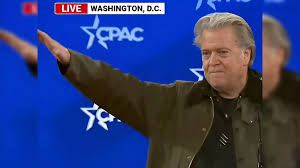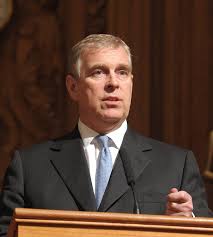Controversy Arises from Steve Bannon’s Nazi Salute

Introduction
The recent actions of former White House Chief Strategist Steve Bannon have ignited considerable controversy and public debate. During a political rally in the United States, Bannon appeared to perform a Nazi salute, raising significant concern over rising extremism and hate symbols within contemporary politics. This incident has implications that resonate deeply within the discussions on hate speech, extremism, and the political landscape.
The Incident
On October 1, 2023, at a far-right rally in Phoenix, Arizona, Bannon was filmed making a gesture widely interpreted as a Nazi salute while addressing the crowd. The footage quickly went viral, leading to widespread condemnation from various political and social groups. Critics argued that such gestures not only trivialise the atrocities committed during the Holocaust but also embolden extremist factions within American society.
In the aftermath of the rally, multiple lawmakers and advocacy organizations issued statements denouncing Bannon’s actions. The Anti-Defamation League described the salute as “an abhorrent display of hate that has no place in our society.” Meanwhile, social media platforms were flooded with responses from users demanding accountability from Bannon and his supporters.
Context and Reactions
This event occurs against a backdrop of rising far-right sentiment in the United States, with many observing a resurgence of extremist ideologies. Bannon, known for his inflammatory rhetoric and ties to nationalist movements, has previously been accused of promoting divisive politics. His appearance and the accompanying gesture have sparked a renewed conversation on the re-emergence of fascist symbols in mainstream discourse.
In response to the uproar, several political analysts noted that Bannon’s actions reflect a broader trend within certain factions of the Republican Party, where extremism often goes unchallenged.
It has prompted discussions regarding how political figures navigate the line between provocative performance and genuinely harmful ideologies.
Conclusion
The outrage surrounding Steve Bannon’s Nazi salute at the recent rally is more than just a fleeting scandal; it raises critical questions about the presence of hate symbols in contemporary politics and their societal implications. As various organisations and individuals continue to respond to this incident, it is crucial to monitor the evolving landscape of political rhetoric and its influence on public sentiment.
Moving forward, citizens and political leaders must remain vigilant against the normalisation of extremist behaviour, ensuring that history’s dark chapters are not repeated. Bannon’s actions serve as a stark reminder of the importance of addressing hate in all its forms, as it continues to threaten the fabric of democratic society.









